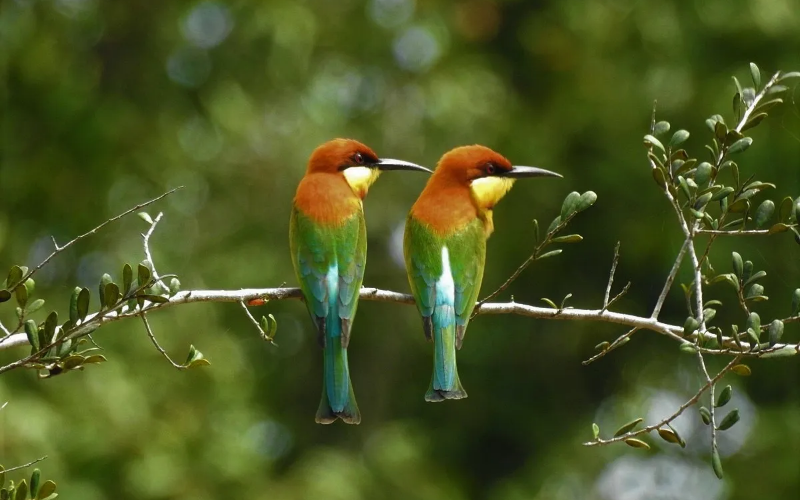About The Blue-tailed Bee-Eater
The Blue-tailed Bee-Eater (Merops philippinus) is a colorful bird species that can be found in Sri Lanka as well as other parts of Asia. With its vibrant green, blue, and chestnut plumage, it is a sight to behold in the wild. In this article, we will explore the world of the Blue-Tailed Bee-Eater, looking at its unique features, behavior, and importance in Sri Lanka’s bird life.
Physical Characteristics of The Blue-tailed Bee-Eater
The Blue-tailed Bee-Eater is a small to medium-sized bird, measuring around 20-23 cm in length. Its plumage is a combination of vibrant green, blue, and chestnut, with a distinctive blue tail. The bird has a long, curved beak that is adapted for catching and eating flying insects, particularly bees.
Behavior of The Blue-tailed Bee-Eater
The Blue-tailed Bee-Eater is an agile and acrobatic bird that is often seen flying high in the sky, chasing and catching insects in mid-air. It feeds primarily on bees, wasps, and other flying insects, which it catches by darting and swooping through the air.
The bird is known for its migratory behavior, with populations in different parts of the world moving to different locations at different times of the year. In Sri Lanka, the Blue-Tailed Bee-Eater is a common migrant that can be seen between the months of September and April.

Where Can You Find The Blue-tailed Bee-eater
Importance in Sri Lanka’s Avifauna
The Blue-tailed Bee-Eater is an important species in Sri Lanka’s avifauna, both ecologically and culturally. The bird plays a crucial role in controlling the population of insects in its habitat, particularly bees and wasps. It is also highly regarded among birdwatchers and nature enthusiasts for its vibrant colors and acrobatic flight.
Conservation Status
The Blue-tailed Bee-Eater is currently listed as “least concern” on the IUCN Red List of Threatened Species. However, habitat loss and degradation due to deforestation and agricultural expansion are major threats to the species’ survival in some areas. Conservation organizations are working to raise awareness about the importance of protecting the bird’s habitat and ensuring their continued survival.
Conclusion
The Blue-tailed Bee-Eater is a colorful and acrobatic bird species that is a sight to behold in the wild. Its role in controlling the population of insects in its habitat and its cultural significance make it an important species in Sri Lanka’s avifauna. However, habitat loss and degradation pose a threat to its survival, and it is our responsibility to ensure its protection and conservation for future generations to enjoy.
Bird Watching Books
If you are interested to know more about birds, please read some good books and magazines to enhance your knowledge about birds and their natural habitats.

